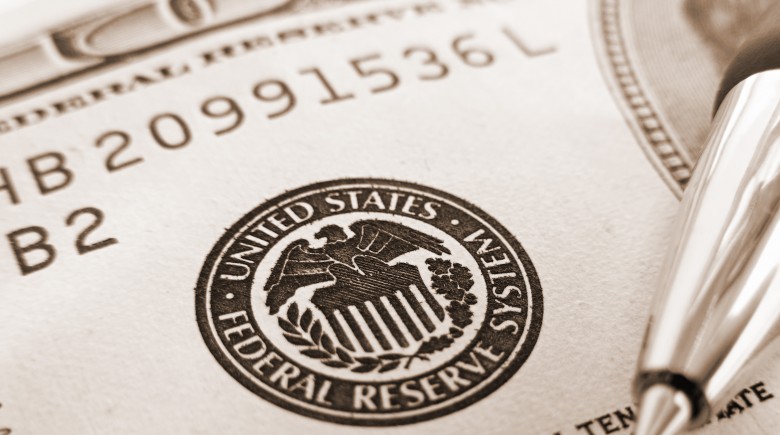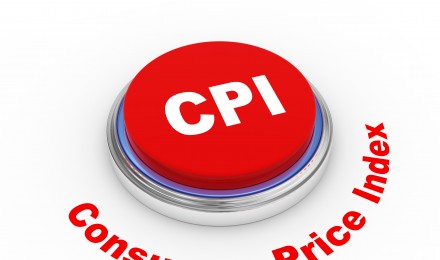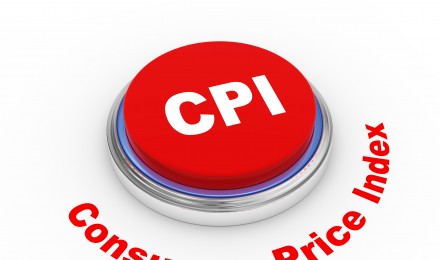The Department of Labor (DOL) release reveals that the Consumer Price Index (CPI) rose 0.5 percent in June after posting a 0.1 percent increase the prior month. It represents the biggest cost of living increase in four months and moves the economy closer to the Federal Reserve target for inflation– capping the rate at 2 percent annually.
Bloomberg’s survey of 83 economists returned a median figure of a 0.3 percent rise. Their estimates ranged from unchanged to 0.6 percent.
A run up in gasoline prices in June accounts for two-thirds of the increase in the index. The clothing category had its biggest price gain since August 2011 at 0.9 percent. The Core CPI-which excludes volatile food and fuel prices, showed a 0.2 percent increase—remaining unchanged from May’s figure, and in line with predictions.
12-month changes
For the year-over-year period ending on June 30, the overall CPI rose 1.8 percent, which exceeded projections . In May, the CPI recorded a 1.4 percent gain over the same period in 2012. The core CPI increased by 1.6 percent compared to June last year. It’s the smallest year-over-year change since June 2011, according to the DOL. The gain for the period of May 2012 to May 2013 was 1.7 percent.
Over the 12-month time frame, the energy index has increased 3.2 percent. And the food index gained 1.4 percent.
Category details
Overall energy costs increased 3.4 percent over May. Gasoline prices experienced the the highest increase since February with a 6.3 percent rise. Automobile prices increased by 0.3 percent and food cost 0.3 percent more. Out of six food categories, four of the indexes posted increases in prices
Retail costs did not increase as much as forecast, climbing 0.4 percent.
Fed’s asset-buying watch
According to economist Omair Sharif of RBS Securities Inc.(Stamford, Connecticut), “This is probably going to be a little bit comforting for some of the folks at the Fed who are worried about lower inflation.”
Some officials, including St. Louis Fed President James Bullard, believe that the inflation rate is too low and can lead to deflation—an outright decline in prices. This scenario could derail the economic recovery. A CPI reading near the Fed’s goal will provide the Fed with the wiggle room it needs to begin scaling back its bond-purchase program later this year.
Other economists advocate a “looser monetary policy” to catapult the Fed to its intended inflation target of 2 percent and as high as 4 percent.
In their opinion, a higher inflation rate will reduce “real interest rates because nominal rates near zero cannot fall further. A higher pace of inflation would encourage more outlays—consumer spending and capital investment. The thinking is that consumers and companies would want to circumvent the eroding effects of inflation on money that is sitting idle and boost the economy.
The CPI is determined on a “basket” of goods and services. Sixty percent of the basket consists of service—including medical visits, airline fares, movie tickets and rents. The CPI represents the broadest indicator for measuring prices in the economy.
The Department of Labor (DOL) release reveals that the Consumer Price Index (CPI) rose 0.5 percent in June after posting a 0.1 percent increase the prior month. It represents the biggest cost of living increase in four months and moves the economy closer to the Federal Reserve target for inflation– capping the rate at 2 percent annually.
Bloomberg’s survey of 83 economists returned a median figure of a 0.3 percent rise. Their estimates ranged from unchanged to 0.6 percent.
A run up in gasoline prices in June accounts for two-thirds of the increase in the index. The clothing category had its biggest price gain since August 2011 at 0.9 percent. The Core CPI-which excludes volatile food and fuel prices, showed a 0.2 percent increase—remaining unchanged from May’s figure, and in line with predictions.
12-month changes
For the year-over-year period ending on June 30, the overall CPI rose 1.8 percent, which exceeded projections . In May, the CPI recorded a 1.4 percent gain over the same period in 2012. The core CPI increased by 1.6 percent compared to June last year. It’s the smallest year-over-year change since June 2011, according to the DOL. The gain for the period of May 2012 to May 2013 was 1.7 percent.
Over the 12-month time frame, the energy index has increased 3.2 percent. And the food index gained 1.4 percent.
Category details
Overall energy costs increased 3.4 percent over May. Gasoline prices experienced the the highest increase since February with a 6.3 percent rise. Automobile prices increased by 0.3 percent and food cost 0.3 percent more. Out of six food categories, four of the indexes posted increases in prices
Retail costs did not increase as much as forecast, climbing 0.4 percent.
Fed’s asset-buying watch
According to economist Omair Sharif of RBS Securities Inc.(Stamford, Connecticut), “This is probably going to be a little bit comforting for some of the folks at the Fed who are worried about lower inflation.”
Some officials, including St. Louis Fed President James Bullard, believe that the inflation rate is too low and can lead to deflation—an outright decline in prices. This scenario could derail the economic recovery. A CPI reading near the Fed’s goal will provide the Fed with the wiggle room it needs to begin scaling back its bond-purchase program later this year.
Other economists advocate a “looser monetary policy” to catapult the Fed to its intended inflation target of 2 percent and as high as 4 percent.
In their opinion, a higher inflation rate will reduce “real interest rates because nominal rates near zero cannot fall further. A higher pace of inflation would encourage more outlays—consumer spending and capital investment. The thinking is that consumers and companies would want to circumvent the eroding effects of inflation on money that is sitting idle and boost the economy.
The CPI is determined on a “basket” of goods and services. Sixty percent of the basket consists of service—including medical visits, airline fares, movie tickets and rents. The CPI represents the broadest indicator for measuring prices in the economy.







